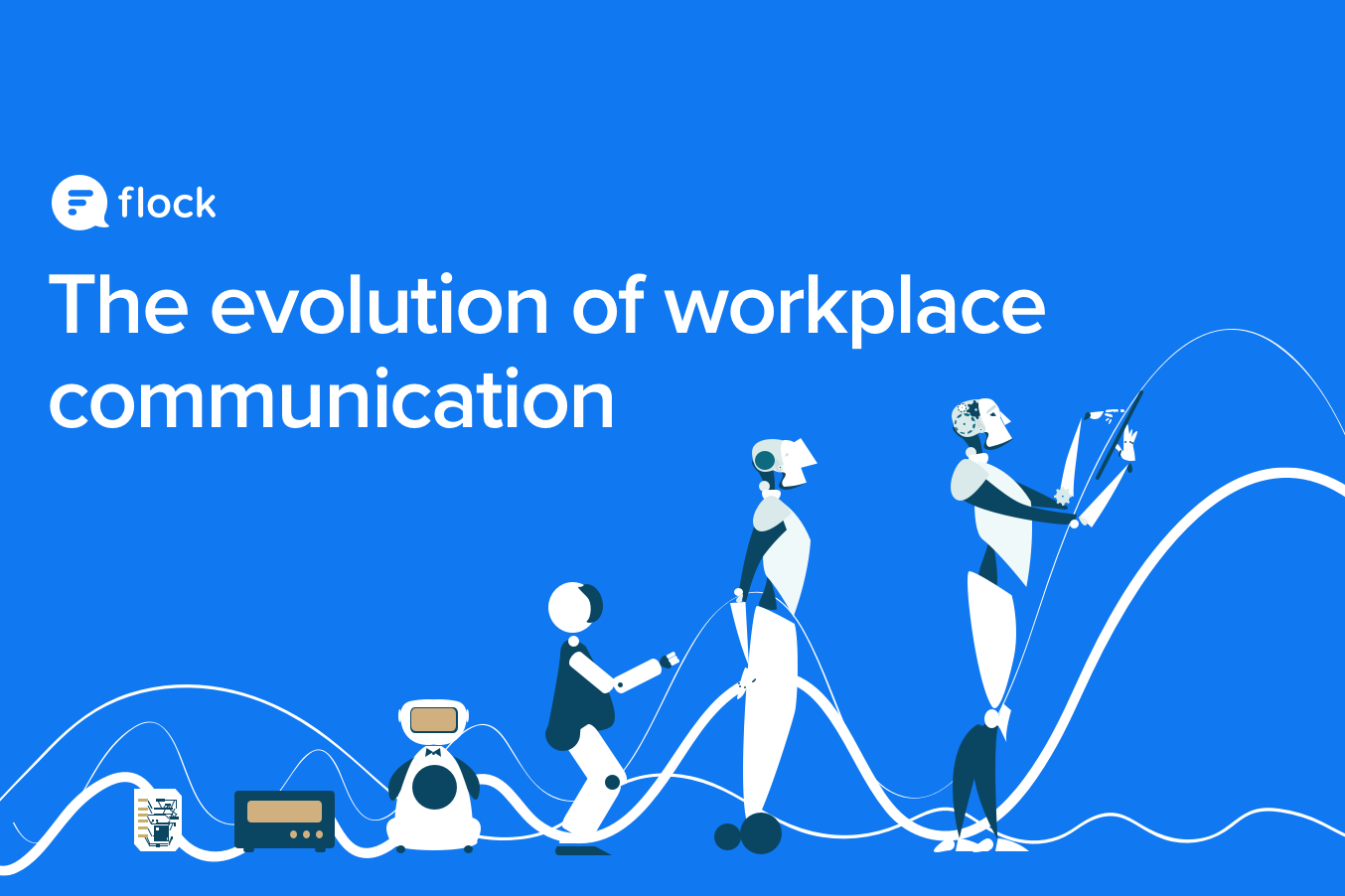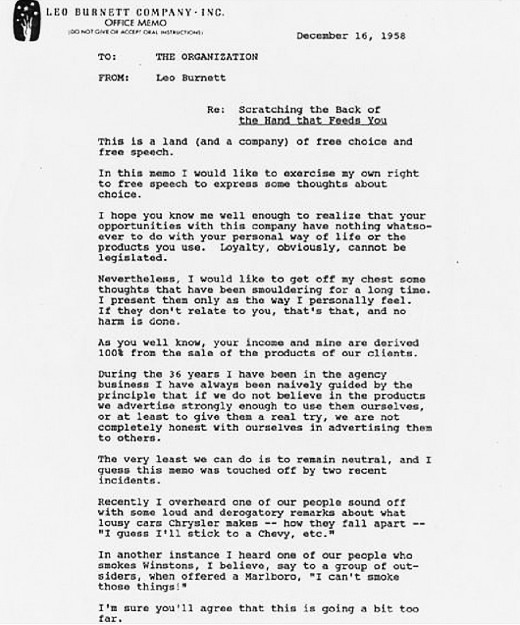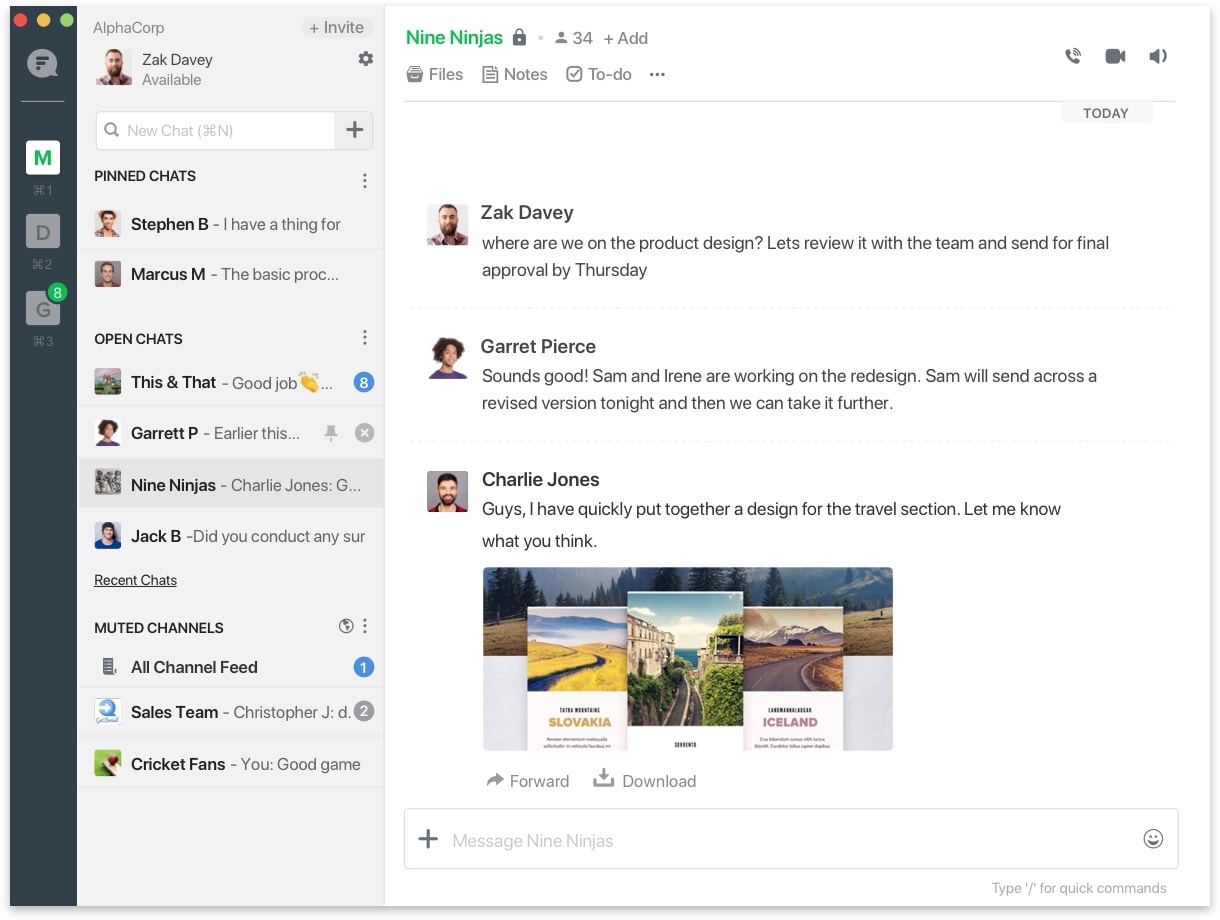
Technology drives human progress, sometimes very rapidly.
Between 1500 and 1750 AD, we invented the first globe but were still riding horses and sailing ships to carry messages. Since 1750, in the same time span, we learned to roam the skies and land on the moon! We went from steam-powered machines and the industrial revolution to the internet and the information age, connecting nearly every corner of the globe with the worldwide web.
Thanks to this period of rapid technological advancement, our jobs have changed, the places we work in have evolved, and so have the tools we use to communicate with each other at work. We’ve gone from memos and notice boards to email and team chat in less than a century!
A few decades ago, computers transformed the workplace and the way we worked. Then, the internet brought us closer, enabling real-time collaboration between workers in every corner of the world. Today, smartphones and 4G LTE mean that any place is a connected workplace.
Naturally, these advancements have created some challenges for effective communication, leading to the development of tools that help teams work better, together. The rise of the internet and real-time collaboration tools have even given birth to entirely new ways of working together!
The history of workplace communication is, in essence, a story of technology reshaping the way we work together. Here are some highlights:
Once upon a time, there was a memo in an office...
At the turn of the nineteenth century, letters had already been a staple of human communication for a few centuries. Business letters were formal, descriptive messages with little to no technical jargon. They were usually typed on stationery with the company letterhead and primarily used to communicate with clients and customers - people outside the organization.
Memos first appeared in the workplace in the late nineteenth century and became commonplace by the 1920s. Memo is a shorter form of the word memorandum, whose Latin origin translates to ‘something to be noted’ or ‘something to be brought to mind.’ Memos were meant for internal use, so they were shorter, informal messages, and the use of jargon was acceptable. They were used to request specific information from colleagues, respond to previous questions, share new information, or give instructions to do something - creating a "paper trail" for future reference.
Collaborate better with your team — use our guide to the 10 best collaboration software tools for productive teams.
Employees wrote memos and sealed them into "routing envelopes" to be picked up, processed, sorted, and delivered by mailroom clerks and postmasters. Typically staid and humorless (there were exceptions!), paper memos signified an era of instruction, rather than dialogue.
Here’s a memo from Leo Burnett to the staff of his advertising agency in December, 1958:
 Source: Letters of Note
Source: Letters of NoteDespite all their benefits, memos became the villains of office TV dramas in the 90s because they were rarely used to deliver positive, uplifting information, and often associated with passive-aggressive office rants. More importantly, they traveled at the speed of paper mail and required businesses to operate mailrooms at every office.
We went nuts for email, even before the internet!
Wait, what? It’s true. The earliest forms of electronic messaging were developed in the 1960s for time-sharing systems like the DTSS. This was before we figured out how to make computers smaller and network them together.
Skipping ahead through the PC revolution, the birth of the internet and Ray Tomlinson’s “clever hack” helped email become the primary means of workplace communication. Businesses saved money on paper, stationery, and mail rooms. Employees could now send and receive information to one or many people at the click of a button. Moreover, if required, one could always print an email and share it physically - just like a memo.
Email is the king of workplace communication today. According to a 2018 study, more than 3.8 billion people use email right now. In other words, more than half the human population on this little planet uses it, exchanging over 293 billion emails a day. In the modern workplace, each day, an average employee receives about 121 emails and sends out 40 business emails.
Yet an email today is fundamentally the same as a memo or letter from the 1960s (except for the faster delivery). It is an asynchronous means of communication that mimics a mailbox to collect incoming messages and send outgoing ones. And that’s too slow for modern business.
An email thread with a dozen co-workers sending replies every few minutes to discuss a project or task? Things can get confusing and long-winded real quick. This directly led to the development of A/V conferencing systems and instant messaging tools.
Today, we say, “Let me Flock that to you!”
Modern team chat tools empower businesses to communicate in real-time from any corner of the world. Tools like Flock, Microsoft Teams, and Slack are helping build an open, learning-friendly culture within businesses of all sizes. This generation of workplace collaboration tools has its roots in instant messaging, which was seen in the workplaces of yesterday as too informal or distracting for business communication.
“One resists the invasion of armies; one does not resist the invasion of ideas.”
- Victor Hugo
The reality is that team chat platforms like Flock have made modern workplaces happier, more open, and more productive, making it so that physical co-location is no longer a barrier to effective and instant communication.

With one-to-one chats, group conversations in channels, video calls, and file sharing, modern team chat tools offer almost everything employees need to communicate and collaborate effectively. The best ones also integrate with other business apps and services, making it easy for employees to bring all their work in one place.
But wait, email is not dead!
So, teams can now discuss a plan, collaborate on a document together, and share analytics data from other tools, all within a team collaboration platform? Great! Does this mean that email is dead? Not at all. When it comes to more extended discussions, where context-setting is essential, and where you need everyone to put in some thought before responding, email still rules the roost.
In reality, team chat and email can coexist perfectly well to enable effective real-time and asynchronous communication in the workplace respectively. As we become a part of hyper-connected workplaces, a key aspect of using these communication technologies is to learn to integrate them into our lives without having them intrude into our lives beyond utility.
At Flock, for example, we encourage our team to exercise their discretion on when to be available. Presence information in the Flock app lets us know when co-workers are away, so enabling ‘Do Not Disturb’ is one way many of us make time for deep work, and to separate work hours from time with our loved ones.
Workplace communication has come an incredibly long way, and technology has helped expand our possibilities at work. When you’re ready to have meaningful and productive conversations with your team, the right tools are out there waiting for you.
A version of this article was originally published in The Economic Times.







